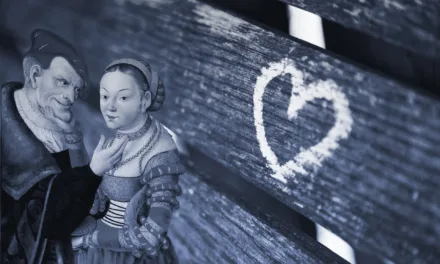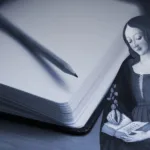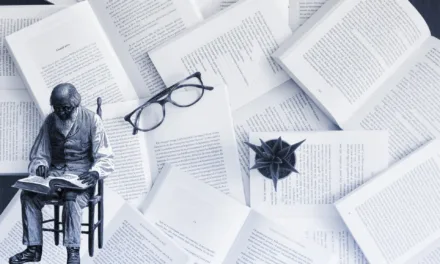
The Art of the Plot Twist: How to Keep Your Audience Guessing

A plot twist is a sudden, unexpected turn of events in a story that changes the plot’s direction or reveals a previously unknown fact. These twists can be a great way to keep readers engaged and add an element of surprise to a story. It’s the story element that helps keep readers riveted and on their toes!
What is a plot twist?
A plot twist can take many forms, such as an unexpected revelation, a surprise ending, a role reversal, or a red herring. They’re an essential part of storytelling because they add depth and complexity, reveal new information, change the story’s direction, create suspense and tension, and add an element of surprise. When used effectively, they can even highlight the theme and message of your story in powerful ways.
The trick is to ensure that your plot twists are believable in your story’s context and that you’re not just using them as a cheap way to create suspense. Readers will see right through a poorly developed plot twist.
How do you incorporate plot twists?
To effectively incorporate plot twists into your writing, you should plan them carefully and ensure they feel like a natural part of the story. This means considering the context of the story and the characters involved and making sure that the twist fits in with the overall tone and style.
To make a plot twist feel more natural and believable, it can be helpful to use foreshadowing to hint at the twist. This can be done through subtle clues woven throughout the narrative, which can help build suspense and keep the audience guessing.
At the same time, it’s important to avoid making the plot twist too predictable. If the audience sees the twist coming a mile away, it will lose its impact. To prevent this, try to devise a surprising twist that still makes sense within the story’s context.
Another important consideration when incorporating plot twists is not to overuse them. While plot twists can be a great way to keep the audience engaged and add excitement, using too many can become confusing and overwhelming. It’s crucial to find the right balance and use plot twists sparingly to keep them effective and impactful.

Types of plot twists
Plot twists can come in many forms and be used in various ways. Here are some of the most common:
Surprise ending
A surprise ending is an unexpected twist at the end of the story, revealing a completely different outcome than what was expected. This type of twist can often be used to subvert genre conventions, provide closure for characters, or give readers a much-needed moment of catharsis.
When using a surprise ending, it’s important to make sure that the twist is believable and that it fits your story world. Make sure that the elements in the story are set up so that the twist could logically happen or that the clues or hints planted throughout build up to it.
Additionally, don’t make the ending too jarring or too far-fetched, as it won’t be as effective and might even confuse or annoy readers.
Flashback reveal
This type of twist uses flashbacks to reveal an unexpected detail, a character’s secret past, or changes how a reader understands the story. For example, it might involve disclosing a character’s secret motivation or past events that directly and surprisingly impact the present story. These reveals can add drama, tension, and emotional weight.
To use a flashback reveal, begin by introducing a mystery or conflict and letting your readers become invested in the characters and their journey. After establishing the tension, use flashbacks to reveal more about your characters. The reveal should be unexpected and dramatic, and have a powerful impact on the plot and the reader’s understanding of the story.
Avoid the trap of revealing too much at once, as this can lower the stakes and lessen the impact. But most importantly, ensure that the twist still makes sense within the story’s context and that its narrative themes remain intact.
Reversal of fortunes
A reversal of fortunes twist involves shifting the power dynamics in the story and turning one character’s advantage into another character’s disadvantage. This type of twist often creates a sense of suspense, surprise, and shock for both the characters within the story and your readers.
Using a reversal of fortunes twist requires the introduction of a set-up that involves one character seemingly having the advantage over another. Build up the tension by making the stakes for the characters clear, and then use a sudden event or revelation to completely turn the tables and give the disadvantaged character the upper hand.
It’s easy for a reversal of fortunes twist to feel forced or contrived, so make sure you pay attention to the context and story world and make it believable.

Unexpected revelation
This type of plot twist happens when a character discovers a shocking truth about themselves or their situation that they were previously unaware of. It can be anything from uncovering a family secret to finding out that an enemy is, in fact, an ally, or even something as simple as learning the real motivation behind someone’s actions.
An unexpected revelation should be a surprise to both the characters and the readers. To set it up, start by seeding clues into the story that hints at the potential revelation. Things should seem one way, and then later reveal a surprising fact that changes how they are perceived.
Tone is very important for an unexpected revelation, as it needs to both shock, and fit seamlessly into your narrative arc. Readers should be surprised at the reveal, but feel like the story left enough hints along the way that if they re-read it, they would see it coming.
Red herring
A red herring plot twist introduces false evidence or clues throughout the story, leading readers down the wrong path and ultimately misdirecting them from the real solution. This type of plot twist creates suspense and surprises readers by making them think they’ve got the story figured out, only for it all to come crashing down.
To use a red herring plot twist effectively, start by subtly introducing clues throughout the narrative that point toward an obvious conclusion. This should be done in a way that makes the ending seem inevitable but ensures you leave enough room for the real truth to come out later.
Make sure the clues are believable and well-integrated into the story to make them more convincing. As the story progresses, characters should begin to collect more clues, and these should lead them down the wrong path as the red herring slowly reveals itself.
Plot twists can keep readers engaged, create tension and suspense, and even surprise them with unexpected outcomes. When used correctly, plot twists can make your story more memorable and powerful.
The next time you read a book, pay attention to how the author seeds and uses plot twists. Investigating how other authors use them is a great way to learn how to incorporate them into your own writing. And if you want to see some great plot twist examples, or just need some inspiration, check out this article, which includes 180 examples of plot twists in action!





























